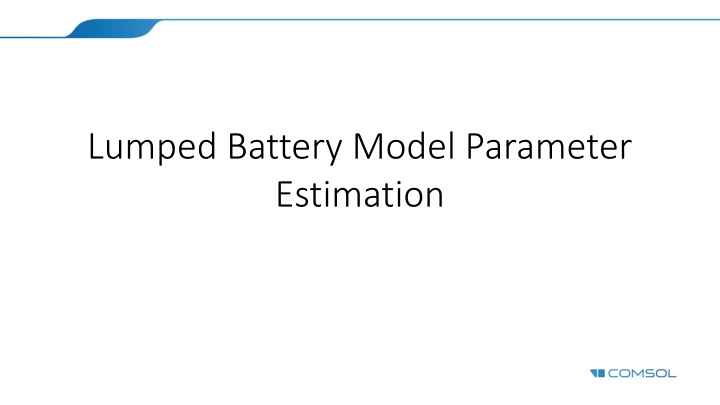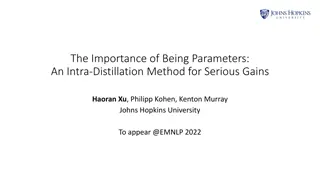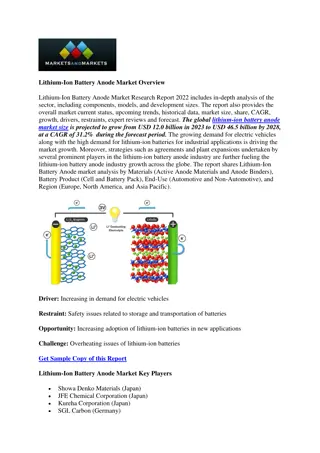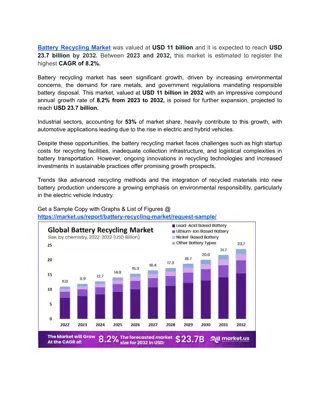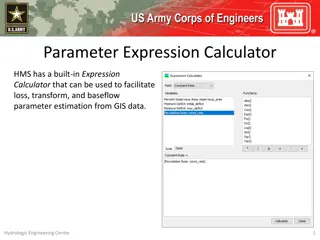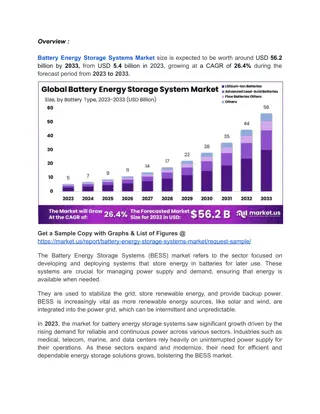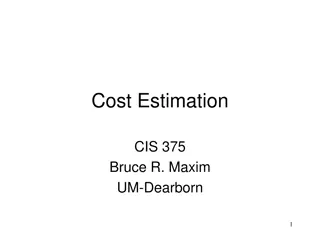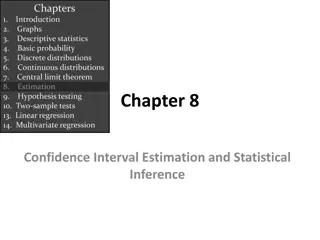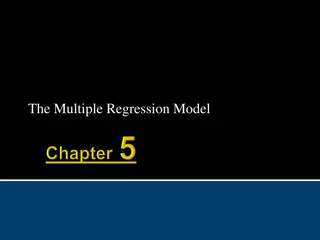Lumped Battery Model Parameter Estimation Overview
This information discusses the estimation of parameters for a lumped battery model, focusing on a black-box approach for lithium-ion battery performance prediction using experimental data and optimization methods. It covers background, experimental data, model fitting parameters, geometry, operating conditions, modeling interfaces, and results.
Download Presentation

Please find below an Image/Link to download the presentation.
The content on the website is provided AS IS for your information and personal use only. It may not be sold, licensed, or shared on other websites without obtaining consent from the author.If you encounter any issues during the download, it is possible that the publisher has removed the file from their server.
You are allowed to download the files provided on this website for personal or commercial use, subject to the condition that they are used lawfully. All files are the property of their respective owners.
The content on the website is provided AS IS for your information and personal use only. It may not be sold, licensed, or shared on other websites without obtaining consent from the author.
E N D
Presentation Transcript
Lumped Battery Model Parameter Estimation
Background and Motivation Battery modeling typically requires a vast amount of parameters, most of which may be unknown to the engineer This example uses a black-box approach for modeling the performance of a lithium-ion battery, requiring no knowledge about the internal chemistry or structure of the battery. A simplified battery model is defined, and an optimization solver is used for parameter estimation using experimental load cycle and open circuit voltage data The lumped model with the optimized parameter values may then be used for predicting the battery performance for an arbitrary load cycle This example models a lithium-ion battery, but the same approach can be used for any battery chemistry
Experimental Input Data OCP vs SOC Battery Capacity (12 Ah) Battery Load Data
Model Fitting Parameters Parameter Unit Description EIR, 1C J0 Ohm Lumped ohmic potential drop at 1C 1 Lumped dimensionless charge transfer exchange current s Lumped time for diffusion process
Geometry and Operating Conditions The battery voltage is modeled in 0D as an analytical expression, based on contributions from ohmic, charge transfer and diffusional losses The diffusional losses are modeled using a 1D domain, representing a generalized electrode particle The battery is operated in galvanostatic mode, controlling the battery current vs time
Modeling Interfaces The Lumped Battery interface is used to define the ohmic, activation and concentration overpotentials (voltage losses) The Optimization interface is used to construct the Global Least Squares objective function, based on experimental battery load cycle data
Model Setup Interpolation polynomials are used for defining the battery open circuit voltage vs state-of- charge and the battery load vs time functions The Optimization node in the Study defines what parameters should be optimized
